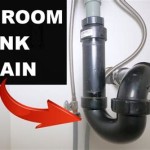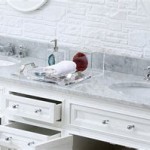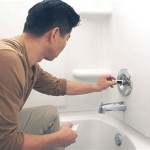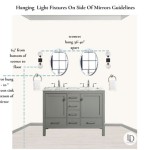Understanding the Bathroom Sink Pop-Up Assembly
The bathroom sink pop-up assembly is a crucial component of any bathroom sink, responsible for controlling the drain and retaining water. While often overlooked until it malfunctions, a basic understanding of its functionality, common issues, and maintenance can prove invaluable for homeowners and professionals alike. This article provides a comprehensive overview of the pop-up assembly, covering its construction, operation, troubleshooting, and best practices for ensuring longevity.
A pop-up drain assembly replaces the older stopper-style drain traditionally found in sinks. The primary benefit is convenience; a lever or knob located near the faucet controls the drain closure, eliminating the need to reach into potentially dirty water to plug or unplug the drain. This mechanism is also more sanitary and generally considered more aesthetically pleasing.
The assembly consists of several key parts, each playing a vital role in its operation. These parts include the stopper (also known as the pop-up plug), the drain body (also called the tailpiece), the pivot rod, the lift rod (and its associated knob or lever), the clevis strap, and various washers and nuts for securing the connections. Understanding the function of each component is essential for proper installation, maintenance, and troubleshooting.
Key Components and Their Functions
Understanding each component's role is essential for effectively troubleshooting and maintaining the pop-up assembly.
The Stopper (Pop-Up Plug): This is the visible part within the sink basin that physically blocks the drain opening. It's typically made of metal or plastic, and often features a rubber gasket or O-ring around its base to create a watertight seal when closed. The stopper is connected to the pivot rod via a vertical extension, allowing it to move up and down to open and close the drain.
The Drain Body (Tailpiece): The drain body is the main housing of the pop-up assembly. It's a cylindrical tube that connects to the sink drain opening and extends downwards to connect to the P-trap. The drain body houses the pivot rod and provides a secure connection point for the stopper. It typically includes threads or flanges for attaching the stopper and connecting to the waste plumbing.
The Pivot Rod: This is a horizontal rod that passes through the drain body. One end of the pivot rod connects to the bottom of the stopper, while the other end connects to the clevis strap. The pivot rod pivots within the drain body, converting the vertical motion of the lift rod into the vertical motion of the stopper.
The Lift Rod: The lift rod is a vertical rod that extends from the faucet fixture and connects to the clevis strap. It is operated by a knob or lever, allowing the user to raise or lower the stopper. When the lift rod is raised, it pulls on the clevis strap, which pivots the pivot rod, lifting the stopper and opening the drain. When the lift rod is lowered, the opposite happens, closing the drain.
The Clevis Strap: The clevis strap is a metal strap connecting the lift rod to the pivot rod. It usually has multiple holes to allow for adjustments in the height of the stopper. Adjusting the clevis strap changes the amount of lift applied to the pivot rod, thus affecting how high the stopper rises and how tightly it seals the drain.
Washers and Nuts: These components are crucial for creating watertight seals and securing the assembly. Washers are typically made of rubber or silicone and are placed between joints to prevent leaks. Nuts are used to tighten the connections and hold the assembly firmly in place. Proper installation and tightening of these components are essential to prevent leaks.
Common Problems and Troubleshooting
Several common issues can arise with bathroom sink pop-up assemblies. Understanding these problems and their potential solutions can save time and money on repairs.
Leaks: Leaks are perhaps the most common problem. These can occur at various points in the assembly, including the connection between the sink and the drain body, the pivot rod connection, or the drain body's connection to the P-trap. Diagnosing the source of the leak is the first step. Check all connections, ensuring that washers are properly seated and nuts are tightened. If a washer is damaged or worn, it should be replaced. Plumber's putty can be used to seal the sink flange to the sink basin.
Stopper Not Sealing Properly: If the stopper doesn't create a tight seal, water will slowly drain from the sink. This can be caused by debris lodged under the stopper, a misaligned stopper, or a worn-out stopper gasket. Cleaning the stopper and the drain opening is the first step. If the stopper is misaligned, adjust the clevis strap to reposition it. If the gasket is worn, it should be replaced. Sometimes, mineral buildup can prevent a proper seal, requiring cleaning with vinegar or a commercial descaling agent.
Stopper Sticking or Not Moving Smoothly: This can be caused by corrosion, mineral buildup, or a misaligned pivot rod. Disconnecting the pivot rod and cleaning it with a wire brush can remove corrosion. Lubricating the pivot rod with silicone grease can improve its movement. If the pivot rod is bent or damaged, it may need to be replaced.
Lift Rod Not Working: If the lift rod is loose or disconnected, the pop-up mechanism will not function. Check the connection between the lift rod and the clevis strap. Make sure the lift rod is properly inserted into the faucet fixture and that the knob or lever is securely attached. If the clevis strap is damaged, it should be replaced.
Clogged Drain: While not directly a problem with the pop-up assembly itself, a clogged drain can indirectly affect its operation. Hair, soap scum, and other debris can accumulate in the drain body and P-trap, restricting water flow. Removing the stopper and using a drain snake can clear minor clogs. For more severe clogs, it may be necessary to disassemble the P-trap for cleaning.
Installation and Maintenance
Proper installation and regular maintenance are key to ensuring the longevity and functionality of the bathroom sink pop-up assembly.
Installation: When installing a new pop-up assembly, it's crucial to follow the manufacturer's instructions carefully. Ensure that all connections are properly tightened and that washers are correctly positioned. Use plumber's putty to seal the sink flange to the sink basin. Adjust the clevis strap to achieve the desired stopper height and seal. Test the drain for leaks after installation.
Regular Cleaning: Regularly cleaning the stopper and drain opening can prevent buildup of debris and maintain proper drainage. Remove the stopper periodically and clean it with soap and water. Use a small brush to clean the drain opening and remove any accumulated debris. A mixture of baking soda and vinegar can also be used to clean the drain and prevent clogs.
Lubrication: Periodically lubricating the pivot rod and other moving parts can prevent corrosion and ensure smooth operation. Use a silicone-based grease or lubricant specifically designed for plumbing applications. Avoid using oil-based lubricants, as they can attract dirt and debris. Applying a small amount of lubricant to the pivot rod where it passes through the drain body can significantly improve its movement.
Inspection: Regularly inspect the pop-up assembly for leaks, corrosion, and damage. Check the washers and nuts for tightness and replace any worn or damaged components. Early detection of problems can prevent more significant issues from developing.
Proper Use: Avoid using harsh chemicals or abrasive cleaners in the sink, as they can damage the pop-up assembly's finish and components. Be mindful of what goes down the drain, and avoid flushing hair, grease, or other materials that can cause clogs. Using a drain strainer can help prevent debris from entering the drain.
By understanding the components, common problems, and best practices for installation and maintenance, homeowners and professionals can ensure the reliable performance of the bathroom sink pop-up assembly for years to come. Addressing issues promptly and performing routine maintenance can prevent costly repairs and extend the life of the plumbing system.

Pop Up Lift Turn Pull Out Stopper Bathroom Sink Drains

Pop Up Lift Turn Pull Out Stopper Bathroom Sink Drains

Luxury Bathroom Sink Pop Up Drain With Extended Thread

Premium Quality Bathroom Sink Pop Up Drain With Extended Thread Kraus

Bathroom Sink Popup And Stopper Problems

Gerber Part G0043973 Bathroom Sink Metal Pop Up Drain Assembly In Chrome Drains Parts Home Depot Pro

Luxier 1 2 In Brass Bathroom And Vessel Sink Push Pop Up Drain Stopper With Overflow Brushed Nickel Ds04 Tb The Home Depot

Moen 10790 Lavatory Pop Up Waste Assembly Chrome Faucetdepot Com

Vigo Vessel Bathroom Sink Pop Up Drain And Mounting Ring

Rp34953ss Drain Assembly Bathroom Plastic Pop Up
Related Posts







